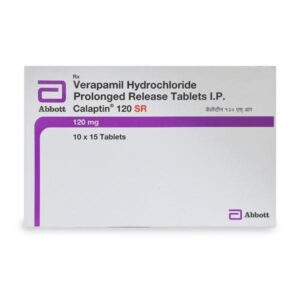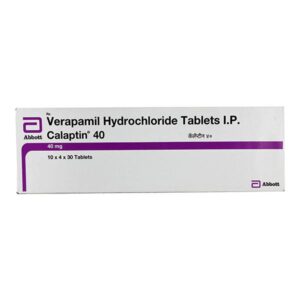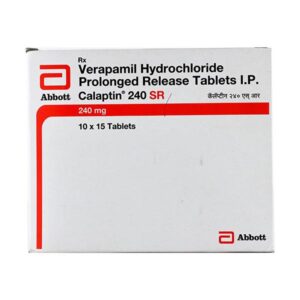VERAPAMIL
VERAPAMIL: Verapamil is a medication that belongs to the class of calcium channel blockers. It is commonly used to treat high blood pressure (hypertension), angina (chest pain), and certain types of irregular heart rhythms (arrhythmias).
The main mechanism of action of verapamil involves blocking the entry of calcium ions into the smooth muscle cells of the blood vessels and heart. By doing so, it helps to relax and widen the blood vessels, improving blood flow and reducing blood pressure. Verapamil also works on the heart by slowing down the electrical conduction through the AV node, which helps to control the heart rhythm.
The dose of verapamil can vary depending on the condition being treated. For hypertension, the typical starting dose is 80 mg to 120 mg taken once or twice daily. This can be increased gradually if necessary. For angina, the initial dose may be higher, around 120 mg to 240 mg per day, divided into several doses. It is important to follow the doctor’s instructions regarding the appropriate dose and duration of treatment.
Common side effects of verapamil may include dizziness, headache, constipation, nausea, fatigue, and low blood pressure. Some people may also experience flushing, swelling of the ankles or feet, and heart palpitations. In rare cases, verapamil can cause serious side effects such as liver problems, allergic reactions, and slow heart rate. It should be used with caution in patients with certain underlying conditions like heart failure or liver disease. It is important to discuss any potential side effects or concerns with a healthcare professional before starting verapamil.




